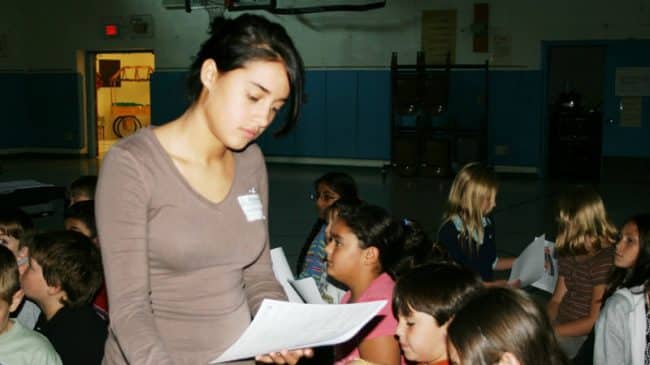LATimes Dust-Up Asks: Are charter schools given too much latitude in teaching ideology to their students? Lisa Snell and Ralph E. Shaffer debate. To read Shaffer’s response, go here.
Schools with extreme ideology have not been a major issue in the charter school movement. Most parents choose charters because they are safer, have stronger academics and maintain more discipline and control over students. Even at the American Indian Public Charter School in Oakland, the ideological beliefs (not buying into progressive teaching pedagogy) are directed at the teaching staff, not the students. In fact, what critics seem to object to at American Indian is the explicit lack of ideological moments for students and the rigid focus on core academics. As controversial charter leader Ben Chavis explained about his schools’ high scores, “These poor kids are doing well because we practice math and language arts. That’s it. It’s simple.”
Charter schools are based on a premise of school choice, and parents are not compelled to enroll. If the discipline and ideology are too much, parents have other choices available. In fact, charter schools have led to systematic district reforms that have increased the number of high-quality choices for families. Oakland is a case in point.
In Oakland, charter schools accounted for 16.8% of the district’s public school enrollment in 2008; there, charter schools are outperforming their district peers at all grade levels. Low-income students, English-language learners and ethnic minority students are sharing in this success. This competition from charter schools has led Oakland to embrace district-wide reforms, including funding schools more like charters and giving principals control of school resources through student-based budgeting. Oakland has also embraced an open-enrollment school assignment policy that allows parents to choose any campus in the district.
Even as the Oakland Unified School District is forced to make significant budget cuts because of declining enrollment and California’s budget crisis, the district is acting more like a charter school organization. The majority of the district’s budget reductions have been made at the central office, and 87% of the district’s unrestricted budget will go to schools in the 2009-2010 school year.
Oakland Unified has been California’s most improved large urban district, adding 73 points to its Academic Performance Index (California’s benchmark for student achievement) over the last four years. In addition, Oakland has seen improvements over a wide variety of indicators: more AP classes, lower dropout rates, more students passing high school exit exams and more rich activities such as debate and chess teams. While Oakland has five of the top-performing charter schools in California, it also saw 21 traditional district schools make double-digit percentage point gains in reading and math scores in 2008.
This story is not unique to Oakland. Charter schools are a stalking horse for real school district reform. The National Alliance for Public Charter Schools reports that in 2008, 12 communities across the country had at least 20% of their public school students enrolled in charter schools, and 64 communities in the U.S. now have at least 10% of their public school students in charter schools. According to the Reason Foundation’s Weighted Student Formula Yearbook 2009, 15 districts have moved to student-based budgeting and open-enrollment school choice policies. In places like Baltimore, Denverand New York City, competition from a large number of charter schools has led districts to begin offering their schools and families some of the same freedom as charter schools enjoy.
Perhaps the new superintendent of Oakland Unified, Tony Smith, summed it up best at a town hall meeting last month by saying he was “a pretty big fan of the charter movement.” But he also said non-charter schools should have the opportunity to enjoy some of the same freedoms as charters: “If you don’t trust people in schools, then you’re going to centrally manage, you’re going to say, ‘I know better than you.’ ”
California’s 700-plus charter schools serve more than 250,000 students; nationwide, about 4,700 charter schools serve more than 1.5 million children. These schools have not been primarily ideological, nor have they compelled parents to enroll their children. They have become so popular because they offer parents high-quality options and the right to exit lower performing district-run schools.
Lisa Snell is director of education at Reason Foundation. This article was first published as part of an LATimes.com Dust-Up “The Great Charter School Debate.”
